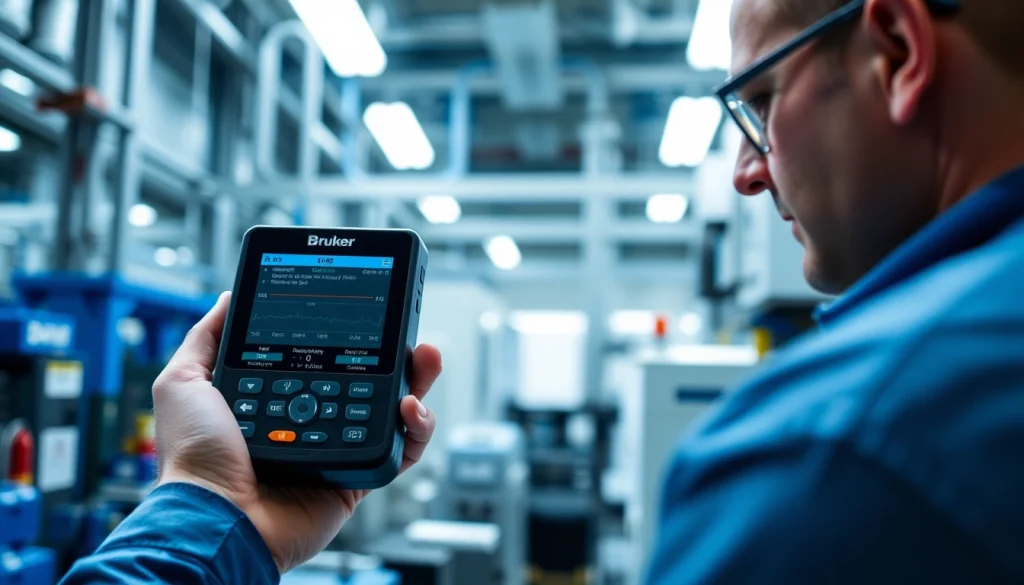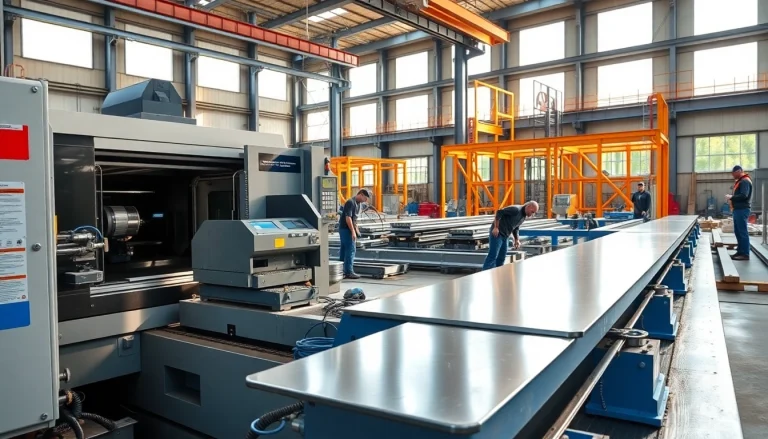
Understanding the Bruker EOS 500 Handheld LIBS Analyzer
The Bruker EOS 500 Handheld LIBS (Laser Induced Breakdown Spectroscopy) Analyzer is a groundbreaking instrument designed for precise material analysis in various field applications. Its advanced technology provides rapid elemental analysis, making it an indispensable tool in industries such as metallurgy, mining, and environmental science. This analyzer facilitates quick decision-making by delivering accurate results on-site without the need for extensive laboratory testing. A key advantage of the Bruker EOS 500 Handheld LIBS Analyzer is its portability, allowing operators to conduct analyses directly in the field, which streamlines workflows and enhances productivity.
Key Features and Specifications
The Bruker EOS 500 is equipped with an array of features that distinguish it from traditional analytical devices. Designed with user-friendliness in mind, this handheld analyzer incorporates a range of specifications:
- Compact Design: Weighing just a few kilograms, it allows for easy transportation across different job sites.
- High-Resolution Spectrometer: The EOS 500 offers high-resolution spectral analysis, enabling it to detect and identify a wide variety of elements, from trace metals to heavier compounds.
- Real-Time Data Processing: Integrated software provides instant results, facilitating prompt on-site decision-making.
- Robust Battery Life: The device features an extended battery life, allowing for hours of continuous operation without a recharge.
- Intuitive User Interface: The simple touchscreen interface requires minimal training, making it accessible to operators of all skill levels.
Benefits of Handheld LIBS Technology
Handheld LIBS technology offers several critical advantages over traditional analytical methods:
- Portability: The compact nature of handheld LIBS analyzers enables users to perform analyses in remote locations, dramatically reducing logistics costs and time.
- Speed of Analysis: LIBS delivers real-time results, allowing immediate action based on findings, which is crucial in industries such as mining and quality control.
- Minimal Sample Preparation: Unlike other spectroscopic techniques, LIBS requires little to no sample preparation, making the process faster and more efficient.
- Environmental Friendliness: LIBS does not require toxic chemicals or extensive laboratory setups, making it a greener alternative to many other analytical techniques.
Field Applications and Use Cases
The versatility of the Bruker EOS 500 makes it a powerful tool across a wide range of applications:
- Metallurgy: Used for metal alloy identification and ensuring material quality in manufacturing.
- Mining: Facilitates mineral identification and ore grade assessment directly in the field.
- Environmental Monitoring: Detects contaminants in soil and water samples, ensuring compliance with environmental regulations.
- Recycling: Analyzes metal compositions in scrap recycling to maximize recovery rates.
Setting Up Your Bruker EOS 500 Handheld LIBS Analyzer
Unboxing and Assembly Instructions
Upon receiving your Bruker EOS 500, it is essential to follow the unboxing procedure carefully:
- Remove the packaging and inspect all components for any shipping damages.
- Locate the handheld analyzer, charging dock, and accessory kit which includes safety goggles, cleaning cloth, and a USB connecting cable.
- Assemble the device as per the instruction manual, ensuring all parts are securely connected.
Calibration and Configuration Steps
Before starting analysis, the analyzer must be calibrated properly:
- Power on the device and navigate to the calibration settings on the touchscreen interface.
- Select the appropriate calibration standard based on the material being analyzed.
- Follow the on-screen prompts to complete the calibration process, which includes testing against known sample spectra.
Safety Precautions for Operators
Safety is paramount when operating any analytical equipment. Here are essential safety precautions to consider:
- Always wear the provided safety goggles to protect your eyes from potential laser exposure.
- Ensure that operators maintain a safe distance from the device during operation.
- Follow all manufacturer safety guidelines, especially concerning handling and storage of the unit.
- Keep the workspace clear of any flammable materials when conducting analyses.
Conducting Effective Material Analysis
Sample Preparation Techniques
Proper sample preparation is crucial for accurate analysis results:
- If necessary, clean the surface of the sample to avoid contamination.
- For metals, ensure the surface is polished to reduce interference from oxides.
- For solid materials, break down large samples to facilitate better measurements.
Operating Procedures for Accurate Results
To achieve reliable outcomes, follow these operating procedures:
- Position the device perpendicular to the sample surface at a consistent distance.
- Initiate the measurement sequence according to the predefined parameters.
- Maintain the analyzer in a stable position until the measurement is complete, as vibrations may skew results.
Common Challenges and Solutions
Users may face several challenges during material analysis:
- Noise Interference: Operators should ensure the area is quiet, and eliminate any possible sources of vibration.
- Calibration Issues: If results seem inconsistent, recalibrating the device with freshly attained standards may resolve discrepancies.
- Sample Variability: Consider running multiple tests on different areas of a sample for ill-defined materials to gain a comprehensive view of the composition.
Optimizing Performance of the Bruker EOS 500 Handheld LIBS Analyzer
Regular Maintenance Practices
To maintain high performance, follow regular maintenance practices:
- Regularly check and clean the lens and other optical components to prevent buildup that could affect accuracy.
- Calibrate the device periodically, especially after prolonged periods of inactivity.
- Inspect the battery and charging systems regularly to ensure functionality.
Troubleshooting Common Issues
Common troubleshooting tips include:
- For software errors, restart the device and update the firmware if needed.
- If you notice inaccurate readings, verify calibration settings against certified standards.
- For hardware malfunctions, consult the user manual and reach out to Bruker’s technical support if necessary.
Performance Metrics to Monitor
Track these performance metrics for ongoing optimization:
- Response time for measurement completion.
- Accuracy and precision of results throughout various conditions.
- Battery life and charging cycles to assess device reliability.
Future Trends in LIBS Technology
Innovations in Handheld LIBS Devices
The field of LIBS technology is rapidly evolving. Future innovations may include:
- Enhanced miniaturization techniques, allowing even more compact device designs without compromising performance.
- Integration of AI and machine learning algorithms to improve analytical precision and predictive capabilities.
- Development of hybrid devices that combine LIBS with other spectroscopic techniques for broader analytical ranges.
The Role of Automation in Material Analysis
Automation is expected to play a significant role in the future of material analysis:
- Automated sampling systems can streamline processes and reduce human error during analysis.
- Robotic arms may enable continuous analysis of materials in production lines, enhancing quality control.
Anticipating Future Applications in Various Industries
The potential expansion of LIBS applications in different sectors includes:
- In the aerospace industry for in-flight material testing and validation.
- In health sectors for biocompatibility testing of materials used in medical devices.
- In agriculture for soil and nutrient analysis, ensuring optimal crop productivity.






